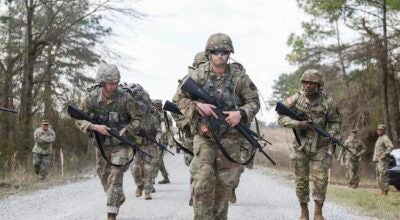Hurricane levee projects here getting top priority
Published 12:00 am Wednesday, October 11, 2006
By CALEB FREY
Staff Reporter
LAPLACE – The River Parishes escaped the brunt of two major hurricanes last year with little to no levee protection from Lake Pontchartrain, but that isn’t stopping administration in St. John and St. Charles to push for millions of dollars to ensure their parishes remain safe when the next big one rolls through.
St. John Parish President Nickie Monica has been hard at work securing a levee system that is proposed near the area adjacent to the I-10 in LaPlace extending through Garyville to the Hope Canal in an attempt to shield St. John from the waters of Lake Pontchartrain.
Hurricane Katrina flooded much of the Gulf Coast last August, sparing St. John from the worst she had to offer. While St. John may have averted disaster last time around, what protection do its residents have from the next major storm?
St. John Parish relies on pumping stations to force out floodwaters, while wetlands in the area act as natural hurricane protection by absorbing rainfall, but the levees that run on River Road are virtually the only manmade protection St. John currently has.
The study for the feasibility of a levee system in St. John is nearing 10 years, according to Monica, but he said it can take quite a while to enact a plan of this magnitude and cost.
The proposed alignment would place a levee on the south side of the I-10, between the interstate and Airline Highway. This would allow for St. John to keep much of its original wetlands intact that lie in the areas between Airline Highway and the proposed levee, and it would also serve to protect the structure of the interstate allowing for travel into and out of the parish in the event of a catastrophe.
Most importantly, Monica said, the levee would prevent the area around it from relying solely on pumps to vacate standing water, which is currently an issue in the Peavine area.
The Pontchartrain Levee District would oversee the project, in conjunction with St. John Parish, and both parties would be responsible for half of the funding needed to construct a levee. The other half would be federally funded.
The proposed cost for the levee system is $134 million, which would require the voters of St. John to approve a special millage tax to pay for the parish’s portion of the necessary funds.
Monica said the original proposed alignment has been revised twice to take in account factors such as the interstate and wetland preservation.
Now, St. John is trying to finalize an agreement with the Corps of Engineers about just where the levee should go. When that is agreed upon, the St. John Parish Council can proceed with seeking a millage for their portion of the funding.
“I have three main goals for this project,” Monica said. “I want the levee to provide the best protection, at a reasonable cost, with the least affect to our wetlands as possible.”
St. Charles Parish is currently preparing to finish up work on a levee system that will span the east bank of the parish along the Bonne Carre Spillway down US 61. Congress has agreed to dedicate $39 million in funding to finish the project over the next two years, said Parish President Albert Laque, but the west bank of the parish is still without levee protection, and may remain so for quite some time.
“We’re still looking for funding on the west bank as we have been for the past several years,” Laque said. “The financing is the real problem. We’re beggars like everyone else when it comes to this money.”
Tab Troxler, emergency preparedness director for St. Charles, said a myriad of problems are causing the holdup on the west bank.
“We don’t have the permits we need in place, the money we need hasn’t been dedicated which leaves a huge funding gap,” Troxler said. “The entire process has been very complex.”




